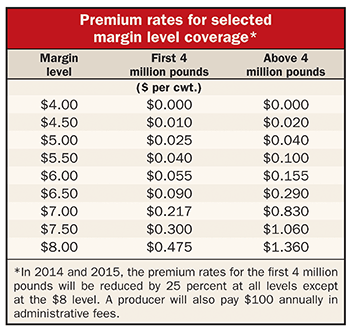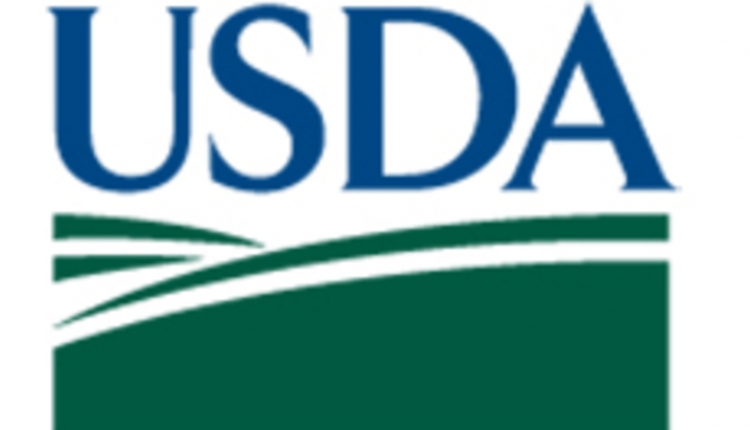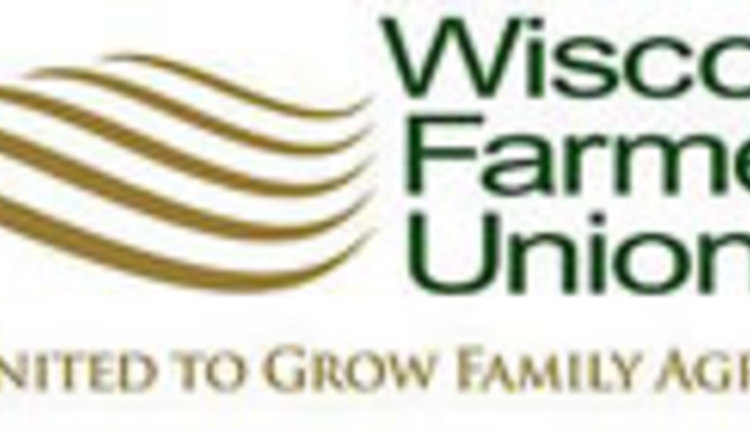The author is a research assistant professor in the department of agricultural and applied economics at the University of Missouri.

The House Ag Committee was instrumental in creating the revamped dairy policy.
Shown L to R: Collin Peterson (D-Minn.), Frank Lucas (R-Okla.) and Steve King (R-Iowa).
With the passage of the Agricultural Act of 2014, the dairy industry is ushering in the most monumental change in dairy policy since the inception of the dairy price support program. In recognition of the large swings in feed costs and milk prices the industry has experienced over the last decade, the U.S. Congress is providing a safety net that protects a margin of milk prices after feed costs. For more on the reasons for this change, read the item, "Farm bill provides dairy producers with a meaningful tool," across from this article (page 114). In this sweeping change in federal dairy policy, the U.S. Congress has eliminated the price support program, the Milk Income Loss Contract program and the Dairy Export Incentive Program.
It starts with a dairy's margin
Before producers can pick the program that best suits their needs, they should calculate the margins for their operation. This calculation should replicate actual milk revenue less feed costs as closely as possible. The producer's calculated margin can then be compared to the national margin to determine how closely their movements follow the U.S. margin.
Critical to this comparison is whether low margin outcomes occur at the same time. The national margin is equal to the U.S. All-Milk price less feed costs represented by national corn and alfalfa prices and the Central Illinois soybean meal price. The higher the correlation between the national margin calculation and the producer's calculated margin, the better this program becomes as a risk management tool.
When a dairy operation registers for the program, it will be assigned a production history equal to its highest annual milk marketings over the 2011 to 2013 calendar years. After a production history is established, the Secretary of Agriculture will adjust the production history in subsequent years to reflect the rise in national milk production. Operations existing for less than one year will have other options available to determine a production history.
For example, a producer whose highest annual marketings was 1 million pounds over the 2011 to 2013 period would be assigned that production history level upon signing up in 2014. If U.S. milk production grows by 2 percent in 2014, this producer's production history would grow to 1,020,000 pounds in 2015. Expansion in milk marketings beyond this level would not be eligible for any margin protection.
Select percent and premium
Participating producers will have two decisions to make annually regarding the level of protection they wish to select. Producers must choose the quantity of production history they wish to protect; between 25 and 90 percent selections must be made in 5 percent increments.
In addition to the coverage quantity, they must select a level of margin protection. They will be able to choose between $4 and $8 coverage in 50-cent increments. The table shows the level of premiums that must be paid for the alternative levels of margin coverage. Free coverage is available to all producers regardless of size at the $4 margin level. At margin coverage levels above $4, the table provides the premiums associated with each level of coverage. These premium levels are locked in for the life of the farm bill, with one exception. In 2014 and 2015, premiums paid on the first 4 million pounds of milk will be reduced by 25 percent (for all levels except $8).
The premium rates on the first 4 million pounds of milk look attractive at all margin levels, especially for 2014 and 2015 with the 25 percent reduction for coverage at $7.50 or less. For producers choosing between different margin levels, it is important to compare the added premium cost relative to the added protection.
For example, a producer with more than 4 million pounds of production would pay an additional 77 cents in premium costs ($1.06 less 29 cents) to move from $6.50 coverage to $7.50 coverage. This added premium may prove too costly relative to the risk reduction the higher margin level would provide your operation.
Producers must be aware that how other dairy producers respond to the program will impact the results of their own participation choice. In low margin periods, if a majority of producers are signed up with margin protection, the time it takes for margins to improve is lengthened, leaving those without protection a longer duration to survive that low margin environment.
Producer payments in low margins
Producers will receive payments on a bi-monthly basis when the actual margin falls below their insured level. The bi-monthly periods begin with January-February and continue for the remainder of the year. Producers who choose $7 coverage would receive a $2 payment on the quantity of milk selected in the first bi-monthly period if the average margin was $5 in January-February. The quantity of milk they are paid on will be their adjusted production history divided by 6 multiplied by their chosen coverage percentage.
Dairy product donation program
Another new program feature is the dairy product donation program. This program instructs the Secretary of Agriculture to purchase dairy products at current market prices when the actual margins fall below $4 for two consecutive months. Products will be distributed to entities serving low-income groups. USDA will not store any products under this provision. This program may raise margins above catastrophic levels (sub $4) but will depend critically on the quantity of products needed by entities serving low-income groups.
Should you sign up?
Dairy producers across the U.S. should focus on the insurance or risk management features provided by the new farm bill. Proper integration of this tool into a producer's overall risk management strategy will provide meaningful options to reduce the operation's margin risk.
There will be years when margins are above trigger levels and producers pay premiums without receiving payments from the program. If 2014 plays out as projected, it may be a perfect example if lower feed costs and strong international demand for dairy products continue and keep actual margins high. However, managing risk is a wise long-term strategy and would even make financial sense this year should a drought or sudden downturn in dairy product exports occur. This program can provide a tool to avoid serious financial losses such as those experienced in 2009 and should be considered as an option for your operation.

This article appears on page 115 of the February 25, 2014 issue of Hoard's Dairyman.

Shown L to R: Collin Peterson (D-Minn.), Frank Lucas (R-Okla.) and Steve King (R-Iowa).
With the passage of the Agricultural Act of 2014, the dairy industry is ushering in the most monumental change in dairy policy since the inception of the dairy price support program. In recognition of the large swings in feed costs and milk prices the industry has experienced over the last decade, the U.S. Congress is providing a safety net that protects a margin of milk prices after feed costs. For more on the reasons for this change, read the item, "Farm bill provides dairy producers with a meaningful tool," across from this article (page 114). In this sweeping change in federal dairy policy, the U.S. Congress has eliminated the price support program, the Milk Income Loss Contract program and the Dairy Export Incentive Program.
It starts with a dairy's margin
Before producers can pick the program that best suits their needs, they should calculate the margins for their operation. This calculation should replicate actual milk revenue less feed costs as closely as possible. The producer's calculated margin can then be compared to the national margin to determine how closely their movements follow the U.S. margin.
Critical to this comparison is whether low margin outcomes occur at the same time. The national margin is equal to the U.S. All-Milk price less feed costs represented by national corn and alfalfa prices and the Central Illinois soybean meal price. The higher the correlation between the national margin calculation and the producer's calculated margin, the better this program becomes as a risk management tool.
When a dairy operation registers for the program, it will be assigned a production history equal to its highest annual milk marketings over the 2011 to 2013 calendar years. After a production history is established, the Secretary of Agriculture will adjust the production history in subsequent years to reflect the rise in national milk production. Operations existing for less than one year will have other options available to determine a production history.
For example, a producer whose highest annual marketings was 1 million pounds over the 2011 to 2013 period would be assigned that production history level upon signing up in 2014. If U.S. milk production grows by 2 percent in 2014, this producer's production history would grow to 1,020,000 pounds in 2015. Expansion in milk marketings beyond this level would not be eligible for any margin protection.
Select percent and premium
Participating producers will have two decisions to make annually regarding the level of protection they wish to select. Producers must choose the quantity of production history they wish to protect; between 25 and 90 percent selections must be made in 5 percent increments.
In addition to the coverage quantity, they must select a level of margin protection. They will be able to choose between $4 and $8 coverage in 50-cent increments. The table shows the level of premiums that must be paid for the alternative levels of margin coverage. Free coverage is available to all producers regardless of size at the $4 margin level. At margin coverage levels above $4, the table provides the premiums associated with each level of coverage. These premium levels are locked in for the life of the farm bill, with one exception. In 2014 and 2015, premiums paid on the first 4 million pounds of milk will be reduced by 25 percent (for all levels except $8).
The premium rates on the first 4 million pounds of milk look attractive at all margin levels, especially for 2014 and 2015 with the 25 percent reduction for coverage at $7.50 or less. For producers choosing between different margin levels, it is important to compare the added premium cost relative to the added protection.
For example, a producer with more than 4 million pounds of production would pay an additional 77 cents in premium costs ($1.06 less 29 cents) to move from $6.50 coverage to $7.50 coverage. This added premium may prove too costly relative to the risk reduction the higher margin level would provide your operation.
Producers must be aware that how other dairy producers respond to the program will impact the results of their own participation choice. In low margin periods, if a majority of producers are signed up with margin protection, the time it takes for margins to improve is lengthened, leaving those without protection a longer duration to survive that low margin environment.
Producer payments in low margins
Producers will receive payments on a bi-monthly basis when the actual margin falls below their insured level. The bi-monthly periods begin with January-February and continue for the remainder of the year. Producers who choose $7 coverage would receive a $2 payment on the quantity of milk selected in the first bi-monthly period if the average margin was $5 in January-February. The quantity of milk they are paid on will be their adjusted production history divided by 6 multiplied by their chosen coverage percentage.
Dairy product donation program
Another new program feature is the dairy product donation program. This program instructs the Secretary of Agriculture to purchase dairy products at current market prices when the actual margins fall below $4 for two consecutive months. Products will be distributed to entities serving low-income groups. USDA will not store any products under this provision. This program may raise margins above catastrophic levels (sub $4) but will depend critically on the quantity of products needed by entities serving low-income groups.
Should you sign up?
Dairy producers across the U.S. should focus on the insurance or risk management features provided by the new farm bill. Proper integration of this tool into a producer's overall risk management strategy will provide meaningful options to reduce the operation's margin risk.
There will be years when margins are above trigger levels and producers pay premiums without receiving payments from the program. If 2014 plays out as projected, it may be a perfect example if lower feed costs and strong international demand for dairy products continue and keep actual margins high. However, managing risk is a wise long-term strategy and would even make financial sense this year should a drought or sudden downturn in dairy product exports occur. This program can provide a tool to avoid serious financial losses such as those experienced in 2009 and should be considered as an option for your operation.












